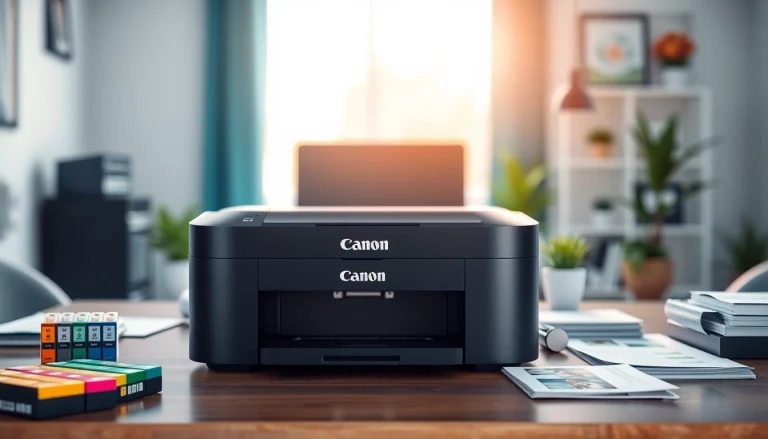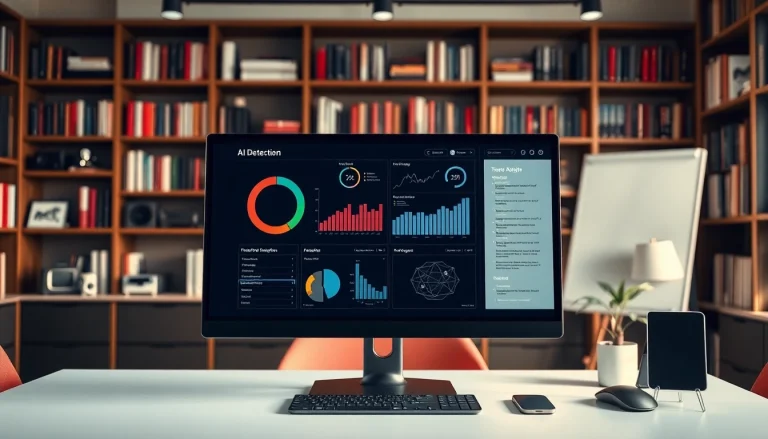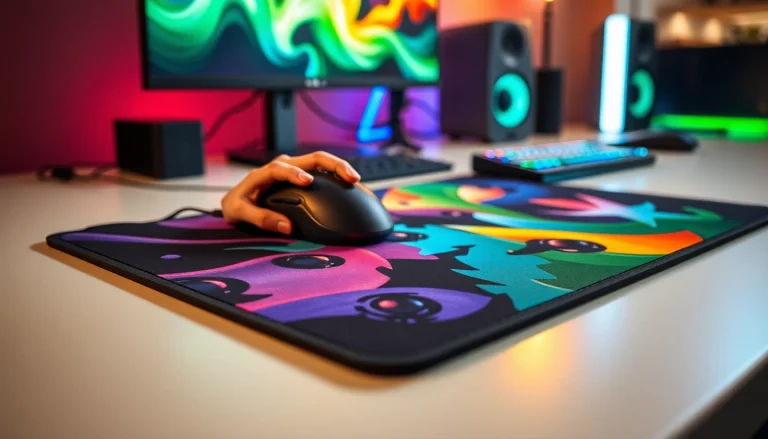
Understanding the Basics of Website Design
Website design is a complex field that combines aesthetics with functionality to create an engaging online presence. It involves numerous components, including layout, color schemes, typography, and user interface elements. An effective website design not only captures the attention of visitors but also ensures they have a seamless experience navigating through the site. This article will provide a comprehensive overview of website design, offering insights into its significance, fundamental principles, and advanced practices. For those looking to excel in their projects, exploring website design will serve as a solid foundation.
What Is Website Design?
Website design refers to the process of creating the layout, visual appearance, and user experience of a website. This discipline encompasses various fields such as graphic design, interface design, and even coding. While designing a website, various elements must be considered in terms of aesthetics and utility. These factors combine to make a website visually appealing and functional, ultimately contributing to the business goals and enhancing user engagement.
Importance of Website Design for Businesses
The significance of website design for businesses cannot be overstated. A well-designed website serves as a digital storefront, representing the brand and influencing first impressions. Here are some reasons why effective website design is crucial:
- First Impressions Matter: Users form opinions within milliseconds of visiting a website. An appealing design builds credibility and trust.
- Increased Engagement: Visually engaging sites keep users on the page longer, leading to lower bounce rates and higher conversion potential.
- SEO Benefits: Good design can enhance search engine optimization (SEO) efforts, as user-friendly interfaces and structures contribute positively to rankings.
- Enhanced User Experience: A well-structured design allows visitors to navigate effortlessly, increasing satisfaction and the likelihood of repeat visits.
Key Components of Effective Website Design
Effective website design integrates several critical components:
- Visual Hierarchy: Properly arranged elements guide visitors’ attention to the most critical parts of a webpage.
- Responsive Design: A website must be functional on various devices and screen sizes, ensuring accessibility for all users.
- Typography: Font choice significantly impacts readability and user experience. Consistency in typography promotes a seamless design.
- Color Theory: Colors evoke emotions and set the mood of a website, establishing a connection to the brand.
Elements of Aesthetic Website Design
Design Principles to Consider
In creating a visually appealing website, designers should adhere to fundamental design principles:
- Balance: Symmetrical and asymmetrical designs create balance, fostering stability within the layout.
- Contrast: Using contrasting elements effectively can draw attention and highlight critical information.
- Alignment: Properly aligned elements facilitate organization and improve overall user experience.
- Repetition: Repeating elements such as colors and font styles enhances visual cohesion throughout the website.
Choosing the Right Color Palette for Your Website Design
Color selection plays a vital role in website design, influencing how users perceive a brand. The color palette should represent the company’s identity and values. Here are steps for selecting an effective color palette:
- Identify Core Brand Colors: Choose colors that resonate with your brand identity.
- Understand Color Psychology: Each color evokes specific emotions; utilize this to shape user perception.
- Test Different Combinations: Utilize tools to experiment with various color combinations for aesthetic balance.
- Ensure Accessibility: Design considering users with color blindness, providing sufficient contrast to enhance readability.
Typography: Fonts and Readability in Website Design
Typography encompasses font choice, size, spacing, and layout within a website. Readability is paramount in ensuring users can easily digest content. Follow these guidelines for effective typography:
- Choose Legible Fonts: Opt for easy-to-read fonts that align with the website’s tone.
- Consistency is Key: Utilize a maximum of two or three font families throughout to maintain uniformity.
- Use Sufficient Size and Spacing: Ensure text is sized appropriately with adequate line spacing to improve readability.
- Consider Font Weights: Different weights can establish hierarchy and guide user focus.
User Experience in Website Design
How User Experience Influences Conversions
User experience (UX) is integral to successful website design, directly impacting conversion rates. A positive UX facilitates interactions that lead to desired actions, such as making purchases or signing up for newsletters. Strategies for enhancing user experience include:
- Employing clear calls-to-action (CTAs) that guide users through the desired journey.
- Create a visually pleasant layout that reduces user fatigue.
- Streamlining the checkout process or sign-up forms to minimize barriers to conversion.
Creating Intuitive Navigation for Website Design
Navigation is the backbone of user experience. Effective navigation ensures users find information quickly. Here are the keys to developing intuitive navigation:
- Limit Menu Items: Keep the main navigation bar concise, ideally containing five to seven items.
- Use Descriptive Labels: Ensure navigation labels are clear and accurately represent the linked content.
- Positioning: Place essential navigation elements in familiar locations to align with user expectations.
- Responsive Menus: Ensure navigation adapts to smaller screens seamlessly.
Accessibility Considerations in Website Design
Accessibility is vital to inclusivity in website design. Making websites usable by people of all abilities is not only a best practice but often a legal requirement. Implement the following strategies to enhance accessibility:
- Use Alt Text for Images: Provide descriptive alt text for images to ensure visually impaired users can understand content.
- Ensure Keyboard Navigation: Allow users to navigate the website solely using a keyboard.
- Optimize Color Contrast: Select color combinations that are easily distinguishable for those with visual impairments.
Advanced Techniques in Website Design
Responsive Design: Adapting to Multiple Devices
Responsive design is crucial in an age where users access the web through various devices. This technique ensures the website adapts to different screen sizes, providing an optimal experience across platforms. Strategies to implement responsive design include:
- Fluid Grids: Use percentage-based widths to allow elements to resize fluidly based on screen size.
- Media Queries: Utilize CSS media queries to apply specific styles depending on the device’s characteristics.
- Flexible Images: Ensure images are responsive, adjusting size within various screen contexts.
Incorporating SEO Best Practices in Website Design
Effective website design should inherently support search engine optimization (SEO) efforts. By adhering to SEO best practices, your site enhances its chances of being found. Some essential tactics include:
- Semantic HTML: Use proper HTML structures to ensure search engines can understand the content.
- Optimize Page Loading Speed: Monitor and enhance site performance, as faster-loading pages positively influence SEO.
- Meta Tags and Descriptions: Properly utilize title tags and meta descriptions for improved search visibility.
Using Analytics to Improve Website Design
Analytics can provide invaluable insights into how users interact with your website, guiding future design decisions. By monitoring user behavior, designers can tailor experiences to better meet visitor needs. Key metrics to track include:
- Page Views: Understanding which pages attract the most traffic can inform design choices.
- Bounce Rate: High bounce rates may indicate issues with user experience or content relevance.
- User Flow: Analyze the paths users take through the site to identify potential navigation improvements.
Future Trends in Website Design
Emerging Technologies in Website Design
The future of website design is being shaped by emerging technologies such as AI, VR, and AR. These innovations provide exciting opportunities for immersive user experiences. Here are some trends to watch:
- AI-Powered Design: AI can analyze user data to suggest design improvements and personalize experiences.
- Voice User Interface (VUI): Websites can increasingly integrate voice search functionality, necessitating design adaptations.
- Augmented Reality: AR allows businesses to provide interactive experiences, enhancing product engagement through their websites.
Minimalistic Trends and Their Impact on Website Design
Minimalism continues to gain traction in design aesthetics, promoting clean lines and simplicity. This trend enhances usability by reducing distractions. Key aspects of minimalistic design to incorporate include:
- Whitespace: Use ample whitespace to allow elements to breathe and improve readability.
- Simplified Navigation: Focus on essential navigation elements, eliminating clutter.
- One-Color Schemes: Utilizing monochromatic colors can create sophisticated and cohesive designs.
The Role of AI in Shaping Website Design
AI is revolutionizing website design, providing tools that automate tasks and facilitate customized user experiences. Designers can harness AI to enhance user personalization, improve site performance, and analyze trends. Emerging applications include:
- Design Automation: AI tools that assist in automatic layout and style generation based on best practices.
- User Behavior Analytics: AI can analyze browsing behavior in real-time, offering actionable insights for designers.
- Personalized Content Delivery: AI algorithms can customize content to fit individual user preferences, enhancing engagement.





